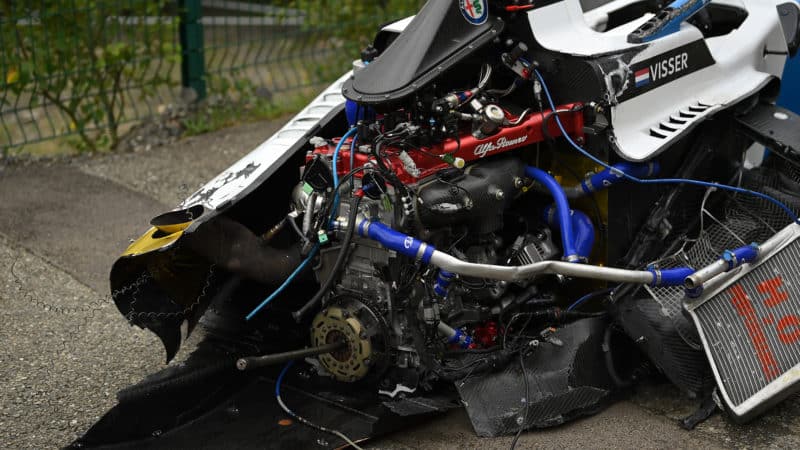The Renault Sport Academy driver was caught in a crash at Raidillon. His BWT Arden hit the barriers and span back towards the track where it was hit by Juan Manuel Correa’s car, causing fatal injuries.
Earlier this month, Correa described Aitken’s crash as “particularly haunting” and said that he had raised safety concerns with organisers and motor racing’s governing body, the FIA.
Following the W Series accident, Aitken wrote: “I’m pretty sure everyone has gotten the picture of what needs changing.”
Since 1969 when the Belgian Grand Prix was cancelled due to the inadequacy of safety barriers, organisers have been attempting to balance the thrill of the swooping section with safety.
The corner claimed the life of Stefan Bellof and there were several near-misses before 1994 when the increased focus on safety following the death of Ayrton Senna led to a chicane being added at the bottom of the hill in 1994.
It was removed the following year after extra safety precautions, and now there is increased pressure to further improve safety without affecting the corner.
Spa has already proposed introducing gravel traps to the Raidillon section, as part of its plans to host a 24 hour motorbike race in 2022, and drivers are urging the work to be carried out, to avoid another repeat incident.
“We all know the risk when we sit the car going flat out at 240 km/h [149mph] up the hill,” wrote GT driver Kevin Estre, after he was involved in the Aitken crash.
“The only thing that could have helped us is gravel on the left side. If you replace the asphalt by gravel, every driver will be 2-3km/h slower. Right now, we all drive at the limit or even over it, knowing that if you have a moment, you just cut the track and do a ‘track limit’.
“In the modern time, we are not afraid of crashing, we are afraid of getting a drive though because of track limit!”


